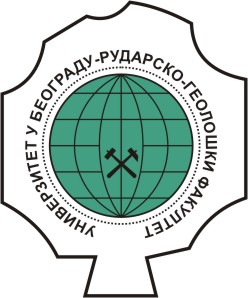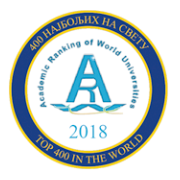Study program:
Environmental Engineering (IX semester -MsC) |
|
Name of subject: Environmental Physical Chemistry |
Instructors:
Prof. Ljubiša Ignjatović |
|
Status: Compulsory |
|
ECTS: 6 |
|
Prerequisites: Physical and Colloidal Chemistry, Environmental Monitoring |
Course Objectives:
The course aims to get acquainted with the physical and chemical processes in nature, that is, in the environment. Given the presence of a large number of pollutants in the environment, the physicochemical properties of these substances as well as their influence on processes in the nature under the influence of sunlight, water, oxygen from the air, microorganisms will be analyzed, along with the introduction of certain physicochemical methods applied in this field . |
Learning Outcomes:
By having knowledge of the characteristics of pollutants in nature and the physicochemical methods of their analysis, their migration and transformation and the impact on processes in nature, a student can identify the conditions and predict the consequences of doing some physicochemical process, or in the end to undertake protective measures to eliminate the harmful consequences , minimize or prevent pollution. |
Content:
Theory teaching
Element formation. Geochemical classification of elements. Physicochemical processes of degradation of rocks and minerals as a source of inorganic pollutants. (Eh-pH diagrams of thermodynamic stability, corrosion, degradation of alumosilicates, carbonates). Land: ion exchange properties; Acidity; Trace elements; Organic matter (humus). Cycle of uranium in nature. Phosphorus cycle in nature. Test I. Cycle of sulfur in nature. A carbon cycle in nature. Physicochemical processes in water: dissolution; adsorption; evaporation; photochemical processes; oxidation processes; hydrolysis. Metabolic processes and bioaccumulation. Electromagnetic radiation and atmosphere. Condensation of water vapor and dissolution of gases. Circulation of gases present in the air. Anthropogenic impact on natural processes. Homogeneous and heterogeneous chemical processes in the atmosphere. Heterogeneous photochemical reactions of organic compounds. Photochemical reactions in the stratosphere. Aerosols. Test II Practical teaching
Radioactivity. Absorption of γ-radiation. Eh-pH diagram of thermodynamic stability of iron. Determination of soil acidity. Mercury in water. Eh-pH stability diagrams. Arsenic in water. Lead in the water. Pesticides in water. Measuring the rate of precipitation of particles from the atmosphere. Infrared spectrophotometry of gaseous (CH4, N2O, O3, CO2, H2O), liquid and solid samples. Seminar. |
Suggested Reading List:
- D. Veselinović, I. Gržetić, Š. Đarmati, D. Marković, Stanja i procesi u životnoj sredini, Fakultet za fizičku hemiju, Univerzitet u Beogradu, Bgd, 1995.
- D. Veselinović, V. Đorđević, Promet zagađivača u prirodi, Naučna knjiga, Bgd., 1980.
- S.E.Manahan, Environmental Chemistry, Lewis publishers, 1994.
- D. Veselinović, M. Janković, V. Đorđević, Zaštita i unapređivanje životne sredine, Naučna knjiga, Bgd. 1981.
- Peter V. Hobbs , Basic Physical Chemistry for the Atmospheric Sciences 2nd Ed., University of Washington, 2000.
- V. P. Evangelou , Environmental, Soil and Water Chemistry: Principles and Applications, Oxford, UK.
|
Conduct of the Course:
Lectures; practical teaching; independent laboratory work; conduct a laboratory log; seminary work |
Fund hours:
| Lectures |
Exercises |
Other forms of teaching |
Study research |
| 2 |
2 |
0 |
0 |
|
Assessment:
| Final Exam |
ECTS |
| Oral Exam | 40 |
| Classwork Assessment |
ECTS |
| практична настава | 10 | | лаб. дневник | 10 | | семинар-и | 10 | | тестови (два) и дом. задаци | 20 |
|
|
Additional Assessment Criteria: - |
|
|






